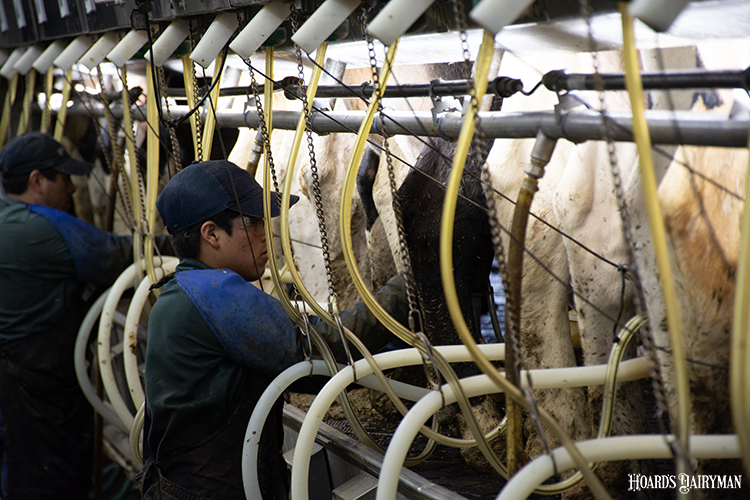
Boosting milk components is one way for dairy farmers to add more value to the milk they produce, especially in markets that pay based on pounds of fat and protein or in areas where farmers are under volume restrictions. In addition, there can be some transportation cost savings when shipping denser milk.
The professor emeritus also pointed out that consumers are eating their dairy products as opposed to drinking them. With dairy demand switching from fluid milk to other products, milk components have become even more valuable.
Along those same lines, the United States is exporting about 18% of its milk production. Those products are not traveling overseas in a fluid form; foreign markets are importing solids and dry dairy products.
When it comes to milkfat production in the United States, Hutjens said 42% goes to cheese production and 18% to butter production, while just 11% is utilized for fluid milk.
Beyond these market signals that direct us to improve component production, there are also signs that come from our cows as component levels can help us troubleshoot potential problems in the herd. Hutjens shared average fat and protein production by breed, as can be seen in the table below. He identified a valuable diagnostic tool, the protein to fat ratio, that can be used to determine if protein and fat production are at the level they should be.
Fat % | Protein % | Protein to Fat Ratio | |
Ayrshire | 3.99 | 3.15 | 0.79 |
Brown Swiss | 4.04 | 3.33 | 0.82 |
Guernsey | 4.65 | 3.36 | 0.72 |
Holstein | 4.00 | 3.12 | 0.78 |
Jersey | 4.90 | 3.72 | 0.76 |
Source: Hoard’s Dairyman, July 2022 | |||
The protein to fat ratio can be determined by dividing the percent protein in milk by the percent fat. If the herd’s protein to fat ratio is greater than 0.90, Hutjens said the cows are missing milkfat. This could be the result of rumen acidosis, a shortage of feed or energy intake, or the source of added fats or oils.
Not only are there health implications, but there are financial ramifications as well. “If milkfat is worth $2.72 a pound (based on February 2023 prices), when you are missing fat, you are missing income for your farm,” he said.
If the protein to fat ratio is less than 0.75, Hutjens said the cows are missing milk protein. This could be caused by an amino acid shortage or imbalance, a lack of microbial amino acid production, or a lack of rumen undegraded protein. These areas could be investigated if the milk protein to fat ratio falls out of the desired level.
Another way milk components can be used as a diagnostic tool is during times of heat stress. Hutjens acknowledged that there is a very characteristic drop in milk components during the summer, commonly a 0.3% reduction in fat production and a 0.2% decline in protein.
“Does your herd show this same response?” Hutjens asked the audience. If so, he said that is a sign you may need to address heat abatement on your farm to try to minimize this drop in milk components. “This is another great message coming from your cows to managers,” he said.
To learn more, watch the March Hoard’s Dairyman webinar, “Strategies for boosting milk components.” This webinar was sponsored by QLF.








